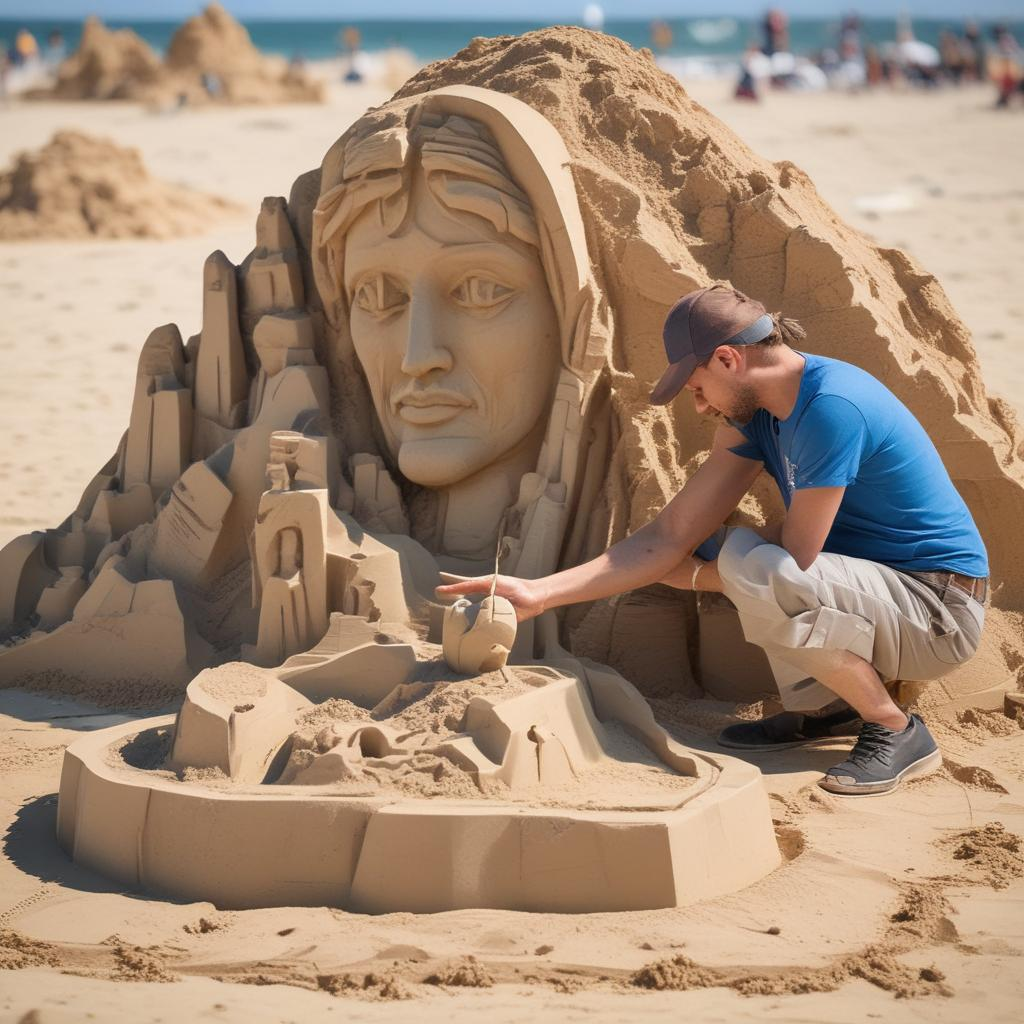Preserving Traditions: Documenting and Safeguarding Sand Art Techniques
Sand art, a delicate and ephemeral form of artistic expression, has been practiced around the world for centuries. From the intricate sand mandalas of Tibetan monks to the beachside sculptures in places like Florida, sand art has not only provided a medium for creativity but also a means of cultural expression. Preserving these techniques has become essential as globalization and modernization have led to the erosion of many traditional practices. Here are essential methods and strategies to document and safeguard these precious sand art techniques.

- Documentation of Current Practices
To preserve the tradition of sand art, the first step is to document existing practices comprehensively. This involves recording the techniques used by current practitioners, including the types of tools and materials favored, the traditional motifs and symbols commonly depicted, and the ceremonial or cultural significance behind the artworks. High-quality video recordings and photographs, as well as detailed written descriptions, enhance the effectiveness of this documentation, making it a valuable resource for future generations.
- Interviews with Practitioners
Integral to the documentation process are interviews with current sand artists. These interviews should aim to capture personal narratives, the history of individuals’ involvement with sand art, and their perspectives on the evolution of their craft. Such firsthand accounts provide depth and context to the practical information collected, offering insights into the personal and cultural significance of sand art.
- Creation of Digital Archives
With advancements in technology, creating digital archives for sand art techniques has become both feasible and necessary. Digital archives offer several advantages, including high storage capacity, ease of access, and the ability to share information globally. Storing scanned images, digital recordings, blueprints, and textual descriptions in a centralized digital repository can help ensure that the knowledge of sand art does not get lost over time.
- Educational Programs and Workshops
To further ensure the longevity of sand art techniques, organizing educational programs and workshops can be highly effective. These programs, aimed at both children and adults, can help to spark interest in traditional sand art and train a new generation of artists. Master classes led by experienced practitioners can play a crucial role in such initiatives, as they transfer knowledge directly to learners, thereby keeping the tradition alive and vibrant.
- Participation in Cultural Festivals
Participation in local, national, and international cultural festivals can dramatically increase the visibility of traditional sand art practices. Festivals offer a platform for artists to showcase their skills and for the public to gain a deeper appreciation of the art form. Furthermore, these events can facilitate networking among artists from diverse regions, promoting cultural exchange and fostering a community of practitioners who can collectively work towards preserving their shared heritage.
- Governmental and Institutional Support
Support from governmental bodies and cultural institutions is critical for the preservation of traditional arts. Advocacy for sand art can lead to funding, protection of intellectual property rights, and assistance in organizing educational and promotional activities. Recognition of sand art as a significant cultural heritage can also elevate its status, encouraging broader societal support for its preservation.
- Publication of Research and Studies
Academic and independent research can contribute significantly to the understanding and preservation of sand art techniques. Publications that explore the historical, cultural, and technical aspects of sand art can validate its importance and contribute to its academic and cultural recognition. Researchers can analyze trends, impacts, and preservation strategies, providing a scholarly framework that supports the conservation efforts of practitioners and advocates.
- Community Engagement and Volunteer Programs
Building a community around the practice of sand art can enhance efforts to preserve it. Establishing volunteer programs that engage local communities can help in maintaining active practice and promoting the traditional art form. Community-led initiatives can also lead to sustainable preservation models driven by collective effort and passion for sand art.
- Integrating with Modern Art and Technology
To keep traditional sand art relevant and appealing to younger generations, integrating these age-old techniques with modern art and technology can be effective. Collaborations with contemporary artists and technologists to create hybrid art forms can open new avenues for traditional sand artists, simultaneously preserving the essence of the traditional techniques while exploring new expressive potentials.
- Establishing Legal Frameworks
The establishment of legal frameworks to protect and manage the intellectual property of sand artists is crucial. Copyright, trademarking, and cultural heritage laws can help ensure that the traditional knowledge and techniques of sand art are respected and preserved. Organizations should work with legal experts to navigate these aspects effectively, safeguarding the artists' rights and the art form's integrity.
Through these multifacated approaches, the rich tradition of sand art can be documented, preserved, and passed on to future generations, ensuring its survival and continual evolution in the modern world. The beauty and uniqueness of sand art, with its intricate designs and cultural depth, deserve recognition and protection as part of the world's intangible cultural heritage.


.jpg)





.jpg)



.png)
0 Comments